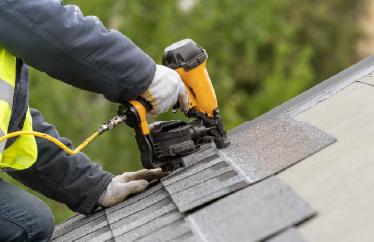Damage from climate and weather disasters cost around $306 billion in 2017, making it the most expensive year on record for natural disasters in the United States. As we think about the fires, floods, hurricanes, earthquakes, tornadoes, and other acts of God that ravaged regions of the country, we can’t help but empathize with the victims. As we think of ways to support them, we should also consider what we stand to learn from these disasters. Clearly, it’s time to get serious about safety.
The world’s largest reinsurance company estimates that policyholders around the globe will receive $135 billion to cover losses from natural disasters last year.CLICK TO TWEET
The world’s largest reinsurance company estimates that policyholders around the globe will receive $135 billion to cover losses from natural disasters last year. It will take years for families and communities to recover and many of the expenses will be paid for out of pocket. In a world where natural disasters are becoming more severe, we should look to 2017 as a baseline, adjust our expectations and decide how to better protect our homes and families in the future (or, where to move next for climate change).
Constructing homes using the right materials
Don’t let the next storm catch you by surprise. To learn about specific weather-related dangers in your area, type your zip code into disastersafety.org. Once you know what you’re up against, you can work with an architect, engineer, builder or even a Lowe's sales associate to make sure you’re prepared.
If you live in an area that could be hit by an earthquake, you’ll want to ensure your home has a strong foundation. If you’re in a windy city, having a sturdy roof (no loose shingles!), roll-down shutters and sealants should be priorities number one, two and three. California residents who could be threatened by wildfires should make sure their roof is made of a non-combustible material like cement shingles.
Homeowners in flood-prone parts of the world should avoid wall-to-wall carpeting and take advantage of mold- and mildew-resistant materials. New drywall and insulation can help minimize flood damage. If you’re having your home built by the coast, it’s best to do it above the water line.
Bottom line: Natural disasters can substantially drive up construction costs. Investing in solid frameworks and materials before storms strike will protect not only your home, but also your wallet. For a more in-depth look at the proper building materials for your climate, check out our guide.
Proactively assessing your insurance policy
While recent storms have devastated communities, some reports indicate that there are still plenty of people without adequate insurance coverage. We learned in our recent severe weather preparation survey that only 32% of responding homeowners reviewed their homeowners insurance in the past year to understand storm- and severe weather-related coverage
According to a global network of 28 insurance organizations, natural disasters like Hurricane Harvey revealed a $1.7 trillion insurance protection gap.CLICK TO TWEET
According to a global network of 28 insurance organizations, natural disasters like Hurricane Harvey revealed a $1.7 trillion insurance protection gap. It’s time for homeowners across the country to evaluate the policies they have or sign up for insurance for the first time.
As you assess whether you have enough insurance, find out how much it would cost to rebuild your home after a flood or wildfire. Focus on your home’s replacement cost, not its market value. You should also consider getting supplemental insurance. Many homeowners policies only offer limited coverage against losses from natural disasters. Preparing for storms that could put your home in danger may seem expensive, but it’s worth it. Being underinsured diminishes your policy’s value — sometimes to the point of uselessness.
When evaluating your insurance options, consider providers like Hippo that go above and beyond to keep clients safe. You want a proactive partner who maintains an open line of communication and provides perks like IoT devices that detect danger and minimize risk. Some insurers even use real-time location intelligence to ensure they can support their customers in the wake of a crisis and pinpoint the areas that need the most attention.
In addition to making sure they have the right insurance provider, homeowners should take steps to prepare their families for bad storms. Have a plan in place so that everyone knows what to do in the event of an emergency. Identify safe areas in the house, create a meeting spot and select a reliable out-of-town relative or friend to contact. You should also fill an emergency kit with water, preserved foods, a flashlight, radio, batteries, a first aid kit, some cash and a copy of your emergency plan. Keep it in an easy-to-reach, accessible place. Depending on the kinds of dangers you face, consider whether there are other preparations you need to make to protect your property.
Taking action to fight climate change
Though we don’t know exactly how much human behavior is to blame, there is evidence that climate change is contributing to the increase in extreme weather events. Experts predict that natural disasters triggered by human-caused climate change are going to become more severe and occur more frequently in the coming years. Instead of hiding underground, many people might want to consider changing their behavior.
There are actions you can take to reduce greenhouse gas emissions and live a more sustainable life. You can use your car less by opting for public transportation or riding a bicycle. Unplug appliances when you aren’t using them and adjust temperature controls when you leave the house. You can eat a low-carbon diet by cutting back on meat, relying less on processed or packaged foods and eating from more local, sustainable sources.
If possible, invest in energy-efficient appliances and products. Start using other forms of energy, like solar power, in your home. These actions alone won’t combat climate change, but they’re a step in the right direction. Plus, they'll give you an alternate energy source for your home should the power go out.
Of course, people need to go beyond making adjustments in their own households. They should also vote for leaders that take climate change seriously and promise to enact change like organizations around the world that promote sustainability.
Some cities are actively taking steps to protect themselves from storms and fight climate change. We should look to them for inspiration. In New Orleans, for example, resilience district projects aim to restructure the city’s landscape and capture rainwater to prevent flooding. Similarly, after the Colorado floods, community leaders in Boulder approved initiatives designed to protect civilians from water damage in the future.
Looking ahead
While we cannot predict which calamities we’ll face years from now, we can look at recent storms and highlight everything we need to improve. Homeowners aren’t doing enough to protect their most valuable asset and human-induced climate change puts all of us at risk. Communities are resilient, but we shouldn’t wait until another disaster happens to find solutions to pressing problems. Every new storm should be the wake-up call that homeowners, builders and policymakers need so that all of us are better protected and prepared for whatever is on the horizon.




